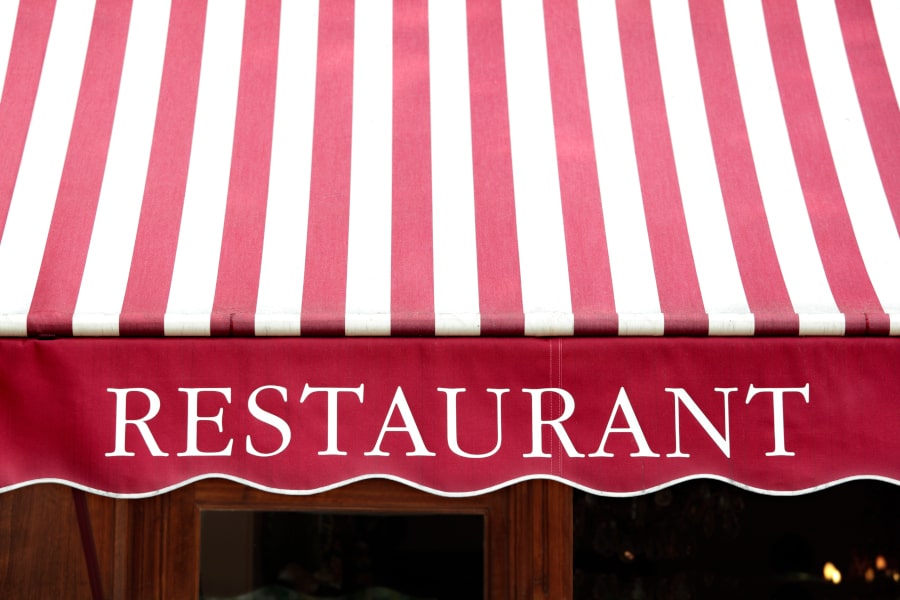An awning or overhang is a secondary covering attached to the exterior wall of a building. It is typically composed of canvas woven of acrylic, cotton or polyester yarn, or vinyl laminated to polyester fabric that is stretched tightly over a light structure of aluminium, iron or steel, possibly wood or transparent material (used to cover solar thermal panels in the summer, but that must allow as much light as possible in the winter).
The configuration of this structure is something of a truss, space frame or planar frame. Awnings are also often constructed of aluminium under-stucture with aluminium sheeting.
These aluminium awnings are often used when a fabric awning is not a practical application where snow load as well as wind loads may be a factor.
The location of an awning on a building may be above a window, a door, or above the area along a sidewalk. With the addition of columns an awning becomes a canopy, which is able to extend further from a building, as in the case of an entrance to a hotel.
Restaurants often use awnings broad enough to cover substantial outdoor area for outdoor dining, parties, or reception. In commercial buildings, an awning is often painted with information as to the name, business, and address, thus acting as a sign or billboard as well as providing shade, breaking strong winds, and protecting from rain or snow.
In areas with wintry weather, most awnings do not have to be taken down at the end of the summer – they can remain retracted against the building all winter long, or be designed and built for those conditions.
Awnings became common during the first half of the 19th century. At that time they consisted of timber or cast iron posts set along the sidewalk edge and linked by a front cross bar. To lend support to larger installations, angled rafters linked the front cross bar to the building facade. The upper end of the canvas was connected to the facade with nails, with grommets and hooks, or by lacing the canvas to a head rod bolted to the facade. The other (projecting) end of the canvas was draped over or laced to a front bar with the edge often hanging down to form a valance. On ornate examples, metal posts were adorned with filigree and the tops decorated with spear ends, balls or other embellishments. On overcast days or when rain did not threaten, the covering was often rolled up against the building facade; during the winter months proper maintenance called for the removal and storage of awnings. Photographs from the mid-19th century often show the bare framework, suggesting that the covering was extended only when necessary.
Canvas duck was the predominant awning fabric, a strong, closely woven cotton cloth used for centuries to make tents and sails.
Awnings became a common feature in the years after the American Civil War. Iron plumbing pipe, which was quickly adapted for awning frames, became widely available and affordable as a result of mid-century industrialization. It was a natural material for awning frames, easily bent and threaded together to make a range of different shapes and sizes. At the same time the advent of the steamship forced canvas mills and sail makers to search for new markets. An awning industry developed offering an array of frame and fabric options adaptable to both storefronts and windows.
For a list of all services and restorations that we at CK Upholstery do, please check out our products and services page.
Or just get a no obligation quote for the type of work you are looking to get done by CK Upholstery.

